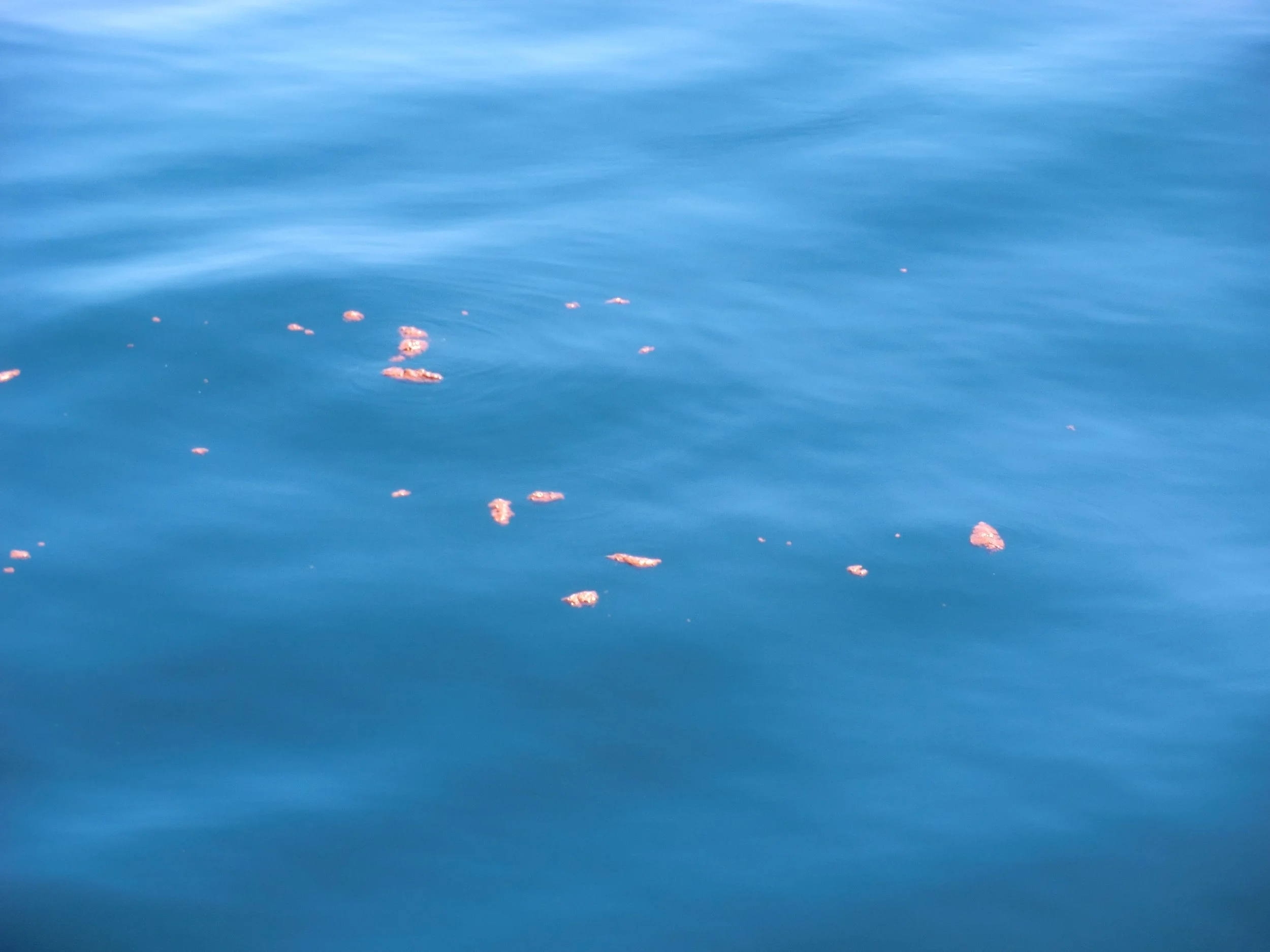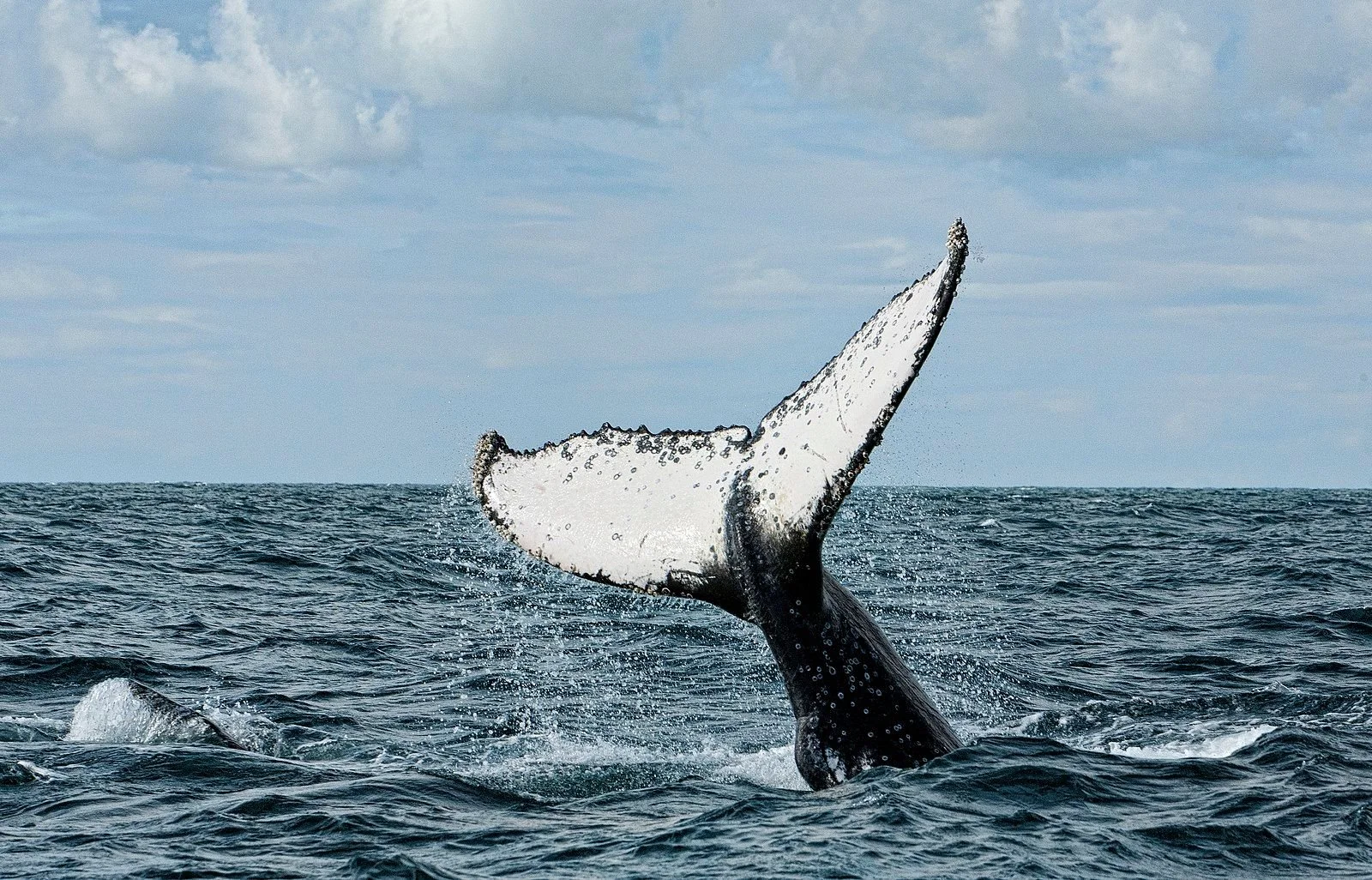Can Artificial Whale Waste Replenish the Ocean?
By Lindsey Neuwirth, Stony Brook University Marine Conservation and Policy Graduate Student
Life in the ocean is dependent on a web of important relationships. The ocean itself is a massive collection of different ecosystems, each dependent on marine species that take up unique roles in perpetuating life in the sea. This includes all ocean species, from small benthic worms to giant squid.
As it happens, one of the ocean’s biggest animals—the whale—has one of the biggest impacts on the way the ocean functions. Whales are among the most ecologically important beings in the seas: Their excrement, and ultimately, their bodies—when they die, fertilize the oceans, driving circulation of carbon and other nutrients consumed by organisms in the sea. Yes, that’s right, even the waste product from a whale provides an essential flow of energy through the marine ecosystem and helps keep carbon cycling in the seas. Unfortunately, this important cycle has been deteriorated by falling whale populations, which have faced significant declines due to historic whaling and continued threats like ship strikes and commercial fishing entanglements.
This lack of whales, and virtual impossibility of plunking more whales in the ocean, has led some scientists to consider alternatives to strengthening the sea’s carbon cycle. Today just 5 percent of Earth’s historic whale population remains, compared to pre-whaling levels. Out of the thirteen remaining whale species, six are categorized as vulnerable or endangered. Dwindling whale populations result in decreased whale excretion and natural whale deaths—which means a shortage of carbon and nutrients, and ultimately, less food to nourish phytoplankton and other ecologically important marine species.
In one recent attempt to restore connectivity between whales, waste, and ocean productivity, British chemist Sir David Anthony King, will conduct research into whether artificial whale excretion can be sprinkled on surface waters in the Arabian Sea and produce the same effects as the real thing—whale poo, that is. Rice husks will serve as the main ingredient in King’s "artificial feces.”
The premise of this experiment involves a process known as ocean fertilization, which is defined as adding nutrients to surface oceans to evoke phytoplankton feeding activity. The hope is that spreading artificial whale waste will mimic the natural process. In turn, the ocean’s carbon cycle may be reestablished, leading to a return in fish stocks and general ocean health.
In addition to providing ecological benefits to ocean species, fertilizing the oceans may also benefit human efforts to combat excessive human carbon emissions. Phytoplankton are excellent carbon absorbers, and the carbon cycle plays an important role in carbon sequestration. Through photosynthesis, the phytoplankton consume carbon dioxide from the atmosphere, providing a similar effect on the environment to how forests act as terrestrial carbon sinks. As plankton die off, they sink to the bottom of the ocean, where they are eaten by other marine organisms that will eventually also produce essential waste. This process creates a biological carbon pump, which is important to the circulation and sequestration of carbon in the ocean.
While there is much uncertainty surrounding the feasibility of King’s project, it is a promising solution. If the experiment is deemed successful, the “feces” will need to be added to the ocean in significant amounts to make up for the deficit of whales. Possible complications arise if the ocean fertilization results in a harmful algae bloom. This occurs when the phytoplankton grow too quickly, produce toxins, and become too dense. Such affects would create low oxygen conditions known as hypoxia, which can cause mortality in a variety of marine life.
Given this precipitous loss in whale populations, it is unlikely that they will be able to thrive the way they once did, even if species recover from their present levels of vulnerability and endangerment. A persistent lack of whales will have long-term consequences for the ocean. In addition to offsetting the balance of the food chain, a diminishing whale population adds an extra 33 tons of carbon dioxide into the environment for each whale that is no longer living. This addition is due the loss of carbon sequestration that each whale was once able to provide.
A similar project known as WhaleX was previously conducted by climate scientist, Dr. Edwina Tanner in Australia. This project sheds light on the future success of King’s experiment as Tanner noted that “It was incredible. The food stayed buoyant and well within the trial zone location”. She followed up that they “are confident they can do this safely”. With similar parameters, it is hopeful that King’s work will be a success.


